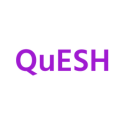What Is ISO 22301?
ISO 22301 is an international standard for Business Continuity Management Systems (BCMS). It provides a framework for organizations to manage and respond to disruptions, ensuring they can continue operating effectively.
Originally developed for disruptions like cyberattacks or natural disasters, ISO 22301’s principles are just as powerful when applied to the slow-burning crisis of an economic recession.
Why ISO 22301 Matters During a Recession
Here’s how ISO 22301 can help businesses build resilience and navigate the uncertainty times:
1. Proactive Risk Assessment and Preparedness
When recession hits, it can reveal hidden weaknesses - like relying too heavily on one client or having a shaky supply chain. But with ISO 22301, businesses can:
• Spot potential risks
• Figure out what they depend on most
• Make a plan to keep things running smoothly during tough times
By using this approach, companies can stay ahead of the curve and handle disruptions professionally.
2. Operational Resilience and Prioritization
One of ISO 22301’s core strengths is the emphasis on critical function continuity. During a recession, this translates into:
• Protecting high-ROI services
• Maintaining delivery standards with fewer resources
• Adapting quickly to remote work or staffing changes
3. Develop and Tested Response Plans
ISO 22301 requires that response plans be documented, implemented, and regularly tested. This readiness enables businesses to:
• React quickly to declining revenues or sudden client losses
• Avoid decision paralysis in high-stress moments
• Use pre-defined recovery procedures to minimize downtime
4. Increased Trust with Clients and Partners
Certification (or alignment) with ISO 22301 builds trust. During a downturn, this sends a strong message:
"We are prepared and resilient. We are here for the long run."
This can improve client retention and attract risk-averse prospects.
5. Efficient Use of Resources
ISO 22301 emphasizes efficiency and sustainability. Businesses can apply this by:
• Reducing waste and non-critical activity
• Redirecting resources to high-value areas
• Creating leaner, more resilient operations
6. Continuous Improvement During Uncertainty
ISO 22301 is based on Plan–Do–Check–Act approach. As the economic climate shifts, your business continuity plan evolves with it, helping you:
• Learn from new data and disruptions
• Improve resilience over time
• Stay agile in a changing market
A Quick Example: Firm in a Recession
Imagine a firm whose clients slash budgets. With ISO 22301 in place, the firm already has:
• A prioritized list of critical services
• A client communication plan ready
• Remote work infrastructure tested and active
• Financial contingency plans in motion
Instead of reacting with panic, the firm adapts calmly and builds long-term trust with its clients.
Conclusion
Recessions aren’t just about survival—they’re a test of adaptability. ISO 22301 gives businesses a structured way to weather the uncertain times, maintain operations, and emerge stronger.
If your organization hasn’t considered adopting ISO 22301 yet, now might be the perfect time. Resilience isn’t just a technical standard—it’s a business strategy.
Note: This article was written in collaboration with AI assistance.



